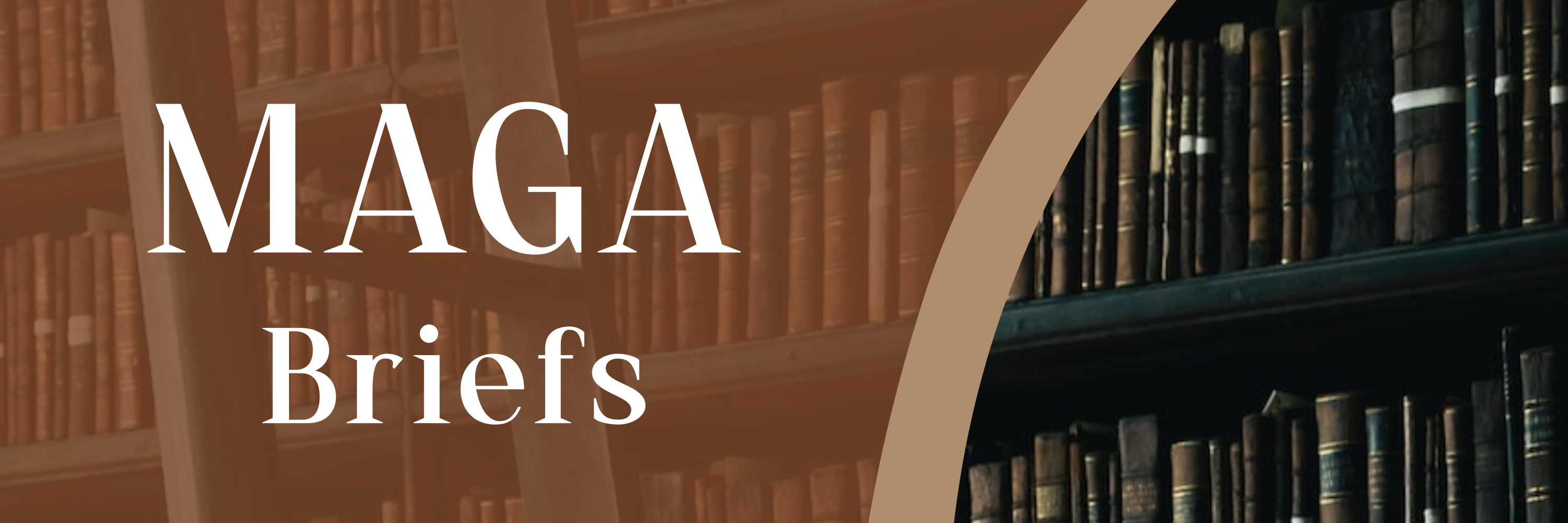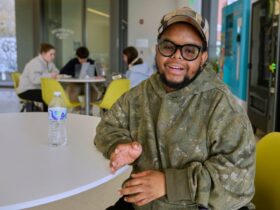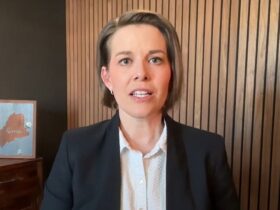Doctors and public health advocates were once able to imagine the end of the HIV epidemic in our lifetime. The last four decades of scientific advancements had delivered new treatments and preventive medications that significantly curbed the rates of transmission and impacts of the once deadly virus. The number of new infections has dropped from more than 130,000 in the mid- 1980s to 37,000 by 2022 — and mortality rates have steadily dropped.
Millions in federal funding — supported by Democratic and Republican leadership alike ― had helped buoy a swath of programs and research into new injectable drugs for HIV prevention and treatment, which are long-lasting and less burdensome than daily medication, and can be used to address HIV disparities across race, gender and sexual orientation both in the United States and internationally.
“With the advent of injectables and how successful they’ve been, I think for many of us, for the first time in a long time, we could actually see what looked like the beginning of the end,” said Tori Cooper, the director of strategic outreach and training at Human Rights Campaign.
But in March, that glimmer of hope began to fade as the Trump administration decimated the nation’s HIV prevention programs as part of Robert F. Kennedy Jr.’s drastic overhaul of the Department of Health and Human Services agency.
The Office of Infectious Diseases & HIV Policy, which oversees the federal strategy on HIV prevention, shuttered its doors. Ten thousand federal health employees were laid off, including staff at five branches of the HIV prevention division of the Centers for Disease Control, who are tasked with tracking new infections and conducting research on strategies to reduce infection risk.
Top staffers, including Jonathan Mermin, the director of the National Center for HIV, Viral Hepatitis, STD and Tuberculosis Prevention ― which lost a quarter of their staff ― were reassigned to the Indian Health Service.
A preliminary HHS budget, obtained by The Washington Post on Wednesday, offers a window into the Trump administration’s priorities, and paints a picture of an even slimmer and reorganized health agency. The proposed budget slashes one-third of the agency’s spending, and eliminates funding for HIV services, including the Minority AIDS Initiative, several Ryan White HIV/AIDS programs, the CDC’s HIV/AIDs prevention and surveillance activities, and preventive services for elderly people and people living with disabilities.
“It’s spelling out a situation where we’re going to see more people get HIV and die from AIDS in the U.S. and internationally,” said Jeremiah Johnson, the executive director of PrEP 4 All, an HIV advocacy organization pushing for a nationwide program to boost access to preventive medication to underinsured communities.
The cuts across federal health agencies have left funding to research institutions dedicated to improving HIV care in limbo. Over the last four months numerous grants were terminated for HIV studies and programs, including a clinical trial to help youth living with or at risk of HIV access vaccines, a trauma-informed study on the role of violence in the lives of women living with HIV, a trial to determine whether Black and Latin men are more likely to stay on PrEP with the help of a patient navigator, and numerous studies on the barriers trans women face to HIV prevention care around the world.
In total, the National Institute of Health has terminated nearly 770 active research grants as of the beginning of April, according to a database kept by academics tracking the cuts. Nearly 29% of grants that have been cut — tallying at around $759 million in funding — involved research into HIV/AIDS.
Since the Food and Drug Administration approved a preventive medication called pre-exposure prophylaxis, or PrEP, in 2012, the rates of new HIV diagnoses steadily fell in states whose insurance plans covered the drug. PrEP, which is taken routinely in pill form, provides nearly complete protection against the virus.
But almost two-thirds of the 1.2 million people who could benefit from PrEP are not taking the medication, according to CDC data. The vast majority of people who currently have access to PrEP are white, despite making up a small percentage of new diagnoses. By comparison, Black and Latino populations, and trans women all experience higher and growing rates of HIV diagnoses, especially in Southern and rural areas. These communities face significant barriers to accessing PrEP, including lack of health insurance or other financial barriers, and discrimination in health care settings.
Public health advocates and scientists have researched ways to address these disparities and boost the use of PrEP among at-risk communities. A new injectable version of PrEP called lenacapavir, administered once every six months, has already shown strong signs of being more effective at preventing the virus than daily oral pills, and could help communities that face challenges to consistent medication.
The FDA will review in June an application for lenacapavir by Gilead, a pharmaceutical company specializing in HIV/AIDS medication. If approved, it would be the second injectable PrEP on the market, following the approval of cabotegravir in 2021. Both long-acting drugs are also used in treatment for people living with HIV, and offer an alternative to people who deal with pill fatigue.
However, Johnson anticipates that “we won’t see the kind of launch that we had hoped for” for PrEP “to get out to communities” as the Trump administration continues to slash funding towards HIV prevention research, and as RFK Jr. promotes “non-evidence based understandings of HIV science.”
“Here we are at a moment of innovation, and rather than capitalize on all of that, we’re going to turn our backs and see more HIV infections and more health care expenditures due to new HIV infections, and a lot more sickness and suffering for our communities,” Johnson said.
In the past, HHS has promoted low or no cost PrEP to patients through programs like Ready, Set, PrEP, for example. The program was started by then-President Donald Trump in 2019 as part of his Ending the HIV Epidemic initiative. The future of that program is now uncertain as the preliminary HHS budget axes funding for the Ending the HIV Epidemic plan altogether.
But with RFK Jr. at the helm of the agency, Trump’s initial goalpost for tackling HIV is now much further away. RFK Jr. has a history of discrediting vaccine efficacy, and championing junk science to insist that changes in lifestyle and nutrition could combat chronic illness. In particular, he has questioned the HIV epidemic, including whether the human immunodeficiency virus causes the chronic condition of AIDS, which it does, and instead attributed the condition to the use of poppers, a recreational drug popular in queer communities.
Dr. Ofole Mgbako, an HIV doctor and assistant professor of medicine and population health at NYU Langone Health, warns that the loss of consistent treatment for HIV could lead to new strains of the virus that are resistant to the drugs currently on hand.
“Treatment interruptions and people being on and off of treatment can breed resistance to the virus. We have not yet found a cure,” Mgbako said. “We have found really effective treatments to keep the virus suppressed within someone’s body, but that means they have to remain on treatment consistently.”
Many of the cuts to grants came after Trump signed several executive orders instructing agencies to axe programs dedicated to improving “diversity, equity, and inclusion,” or addressing trans or broader LGBTQ+ communities.
In mid-February, nine nonprofit community health and advocacy organizations focused on servicing the health needs of the LGBTQ+ community, including HIV prevention and treatment, sued the Trump administration, alleging that the executive orders resulted in their grants being terminated.
Among them was the San Francisco AIDS Foundation, which had received a grant concurrently with the University of California San Francisco, to study the effectiveness of Doxy PEP, a drug that helps to prevent bacterial sexually transmitted infections after sex.
We Don’t Work For Billionaires. We Work For You.
Already contributed? Log in to hide these messages.
San Francisco Community Health Center, a health clinic serving LGBTQ+ people and people of color, noted in the suit that it had received multiple termination orders related to CDC grants, including $2.2 million from the SF Department of Health which receives funding from the Ending the HIV Epidemic and Ryan White ― both Heath Resources and Services Administration programs dedicated to providing HIV care to low-income communities.
Now, much of this research and funding toward programs for HIV prevention remains at a standstill — not only backsliding decades of progress toward lowering incidents of transmission, but also creating a future where rising medical costs to care for new HIV positive patients is inevitable.
















Leave a Reply